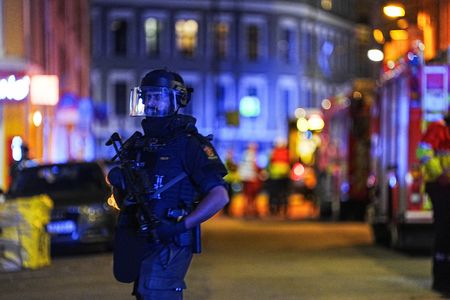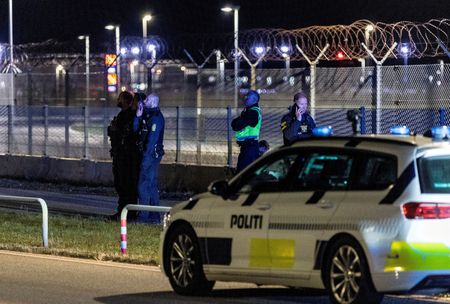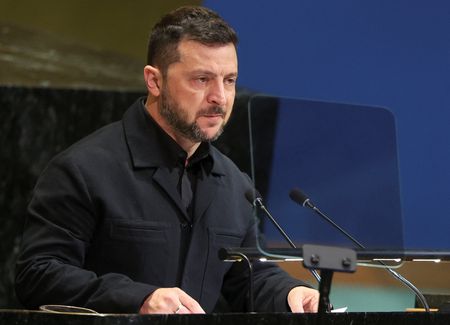By John Irish
UNITED NATIONS (Reuters) -Norway and Denmark are in close contact over separate drone incidents that halted airports in Oslo and Copenhagen, but as of yet their investigations have not yet established a connection, Norway’s foreign minister said on Wednesday.
Sightings of two or three large drones near Copenhagen airport late on Monday halted all take-offs and landings for nearly four hours. Authorities in Norway also shut the airspace at Oslo airport for three hours after a drone was seen.
“We have not yet established that the investigation has made any connections between the two. Nor have we connected it to a particular country,” Espen Barth Eide told Reuters on the sidelines of the UN General Assembly.
“But obviously, I think most people would say that two similar things happening at the same time at least could suggest that there was a connection between them.”
Western security agencies have in recent years said hybrid threats, particularly from Russia, were becoming increasingly aggressive.
Such threats include everything from physical sabotage of critical infrastructure to disinformation campaigns, suspected espionage, and cyberattacks.
“We’re neither confirming nor excluding that the two are connected,” Barth Eide said. “What we can say is that in this time of hybrid threats and potential hybrid warfare, these are exactly the things we have to look for,” he said, describing it as a very strong warning.
On Tuesday, Norway’s government said Russia, with which it shares a short, sparsely populated northern border, had violated its airspace on three occasions in 2025, in April, July and August, adding that it was not clear if it was accidental on the Kremlin’s part or a calculated provocation.
Suspected Russian drone incursions into Polish and Romanian airspace, as well as Estonia reporting that Russian fighter jets had entered their airspace have raised concerns among NATO allies have raised that there are gaps in their air defences.
“We have also lately seen other types; we’ve seen cyberattacks with material effects, for instance, affecting some dams and hydroelectric systems which came from abroad. So the hybrid set of the repertoire of hybrid threats is becoming increasingly large, and it’s also being used,” Barth Eide said.
(Reporting by John Irish; Editing by Alistair Bell)











